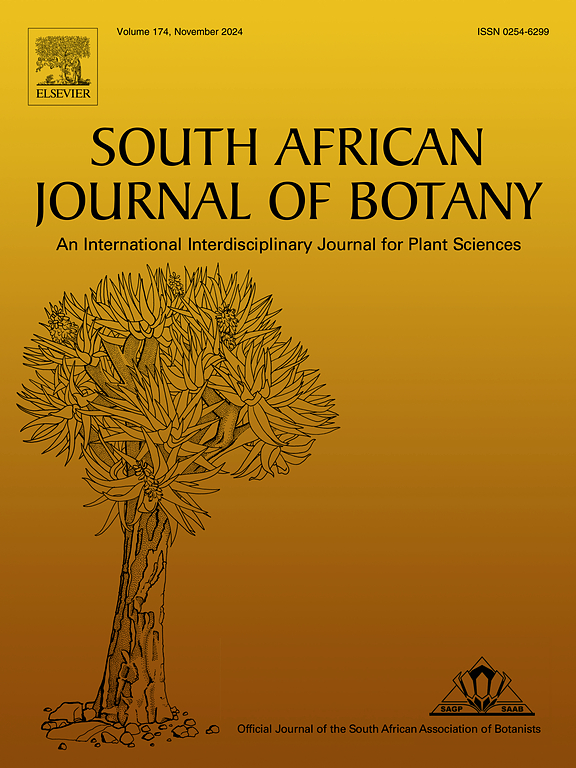The spatial distribution patterns of freshwater diatom species in the southern Karoo related to their associated environmental conditions
IF 2.7
3区 生物学
Q2 PLANT SCIENCES
引用次数: 0
Abstract
The aim of this study was to investigate the distribution of diatom species and their relationship to measured environmental factors within the Karoo. TWINSPAN was used to identify groups of indicator species and samples. Five groupings, that would best describe the species and their habitats, emerged. Two of the five groups (Group 000 and 001) were restricted to the Southern Karoo of which Group 000 was indicated by Nitzschia elegantula while Group 001 did not have any specific indicator species. Group 01 was indicated by Achnanthidium minutissimum which does not reflect the water chemistry but rather could be an indicator of habitat disturbance (e.g. desiccation during drawdown within the reservoir). Halamphora veneta and Achnanthidium minutissimum were indicators for Group 10 even though the latter was grouped in 01. Water bodies reflecting low flow water with anthropogenic influences (Group 11) are indicated by Planothidium frequentissimum, Amphora pediculus, Amphora sp1, Sellaphora nigri and Gomphonema parvulum. While an overlap of certain groups of species occurred (shown through Detrended Correspondence Analysis), there is a differentiation of species and the habitats in which they occur. The multivariate analysis and TWINSPAN indicator groups reveal that the diatom species identified in this study serve as effective indicators of varying water chemistry types within the Karoo. Key environmental factors influencing habitat groupings include electrical conductivity, chloride, calcium, sulphate, and several micronutrients, notably lithium. This extensive dataset marks an important advancement in establishing indicator groups for South African diatoms, providing a foundational framework for future ecological assessments.
卡鲁南部淡水硅藻物种的空间分布格局与环境条件有关
本研究的目的是调查卡鲁河中硅藻种类的分布及其与所测环境因子的关系。采用TWINSPAN对指标物种和样本进行分类。出现了五个最能描述物种及其栖息地的分类。5个类群中的2个(000组和001组)局限于南卡鲁地区,其中000组以秀丽Nitzschia elegantula为指示种,001组没有任何特定的指示种。第01组由Achnanthidium minutissimum表示,它不反映水化学,而可能是生境干扰的一个指标(如水库蓄水过程中的干燥)。第10组虽在01年被分组,但其指标仍为大戟和小戟。反映受人为影响的低流量水体(第11组)为Planothidium frequentissimum、Amphora pediculus、Amphora sp1、Sellaphora nigri和Gomphonema parvulum。虽然出现了某些物种群体的重叠(通过非趋势对应分析显示),但物种和它们发生的栖息地存在分化。多变量分析和TWINSPAN指标组表明,本研究确定的硅藻种类是卡鲁河不同水化学类型的有效指标。影响生境分组的关键环境因素包括电导率、氯化物、钙、硫酸盐和几种微量营养素,尤其是锂。这个广泛的数据集标志着在建立南非硅藻指标组方面取得了重要进展,为未来的生态评估提供了基础框架。
本文章由计算机程序翻译,如有差异,请以英文原文为准。
求助全文
约1分钟内获得全文
求助全文
来源期刊

South African Journal of Botany
生物-植物科学
CiteScore
5.20
自引率
9.70%
发文量
709
审稿时长
61 days
期刊介绍:
The South African Journal of Botany publishes original papers that deal with the classification, biodiversity, morphology, physiology, molecular biology, ecology, biotechnology, ethnobotany and other botanically related aspects of species that are of importance to southern Africa. Manuscripts dealing with significant new findings on other species of the world and general botanical principles will also be considered and are encouraged.
 求助内容:
求助内容: 应助结果提醒方式:
应助结果提醒方式:


